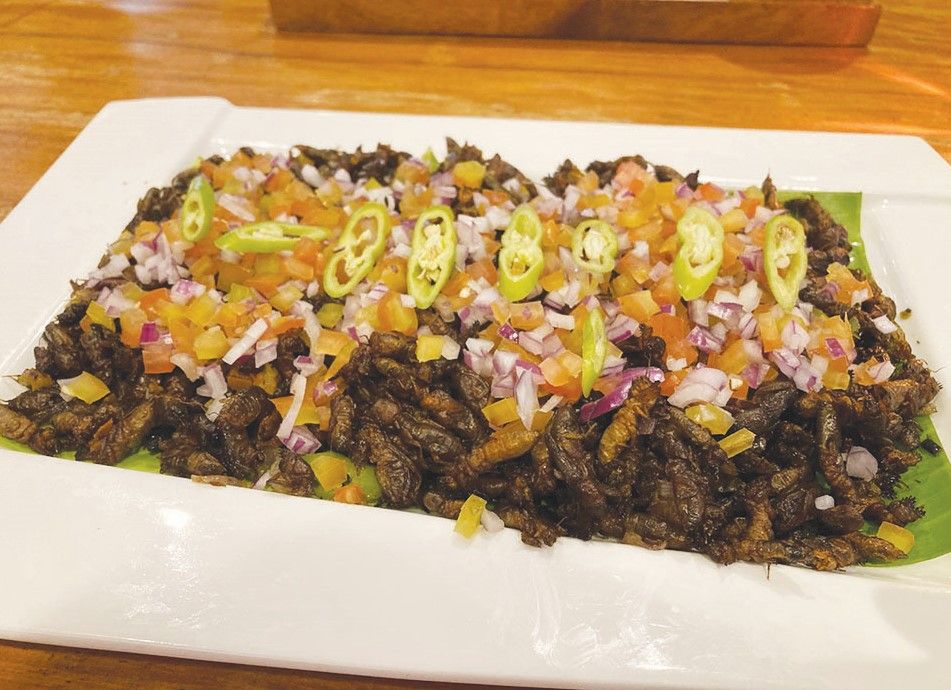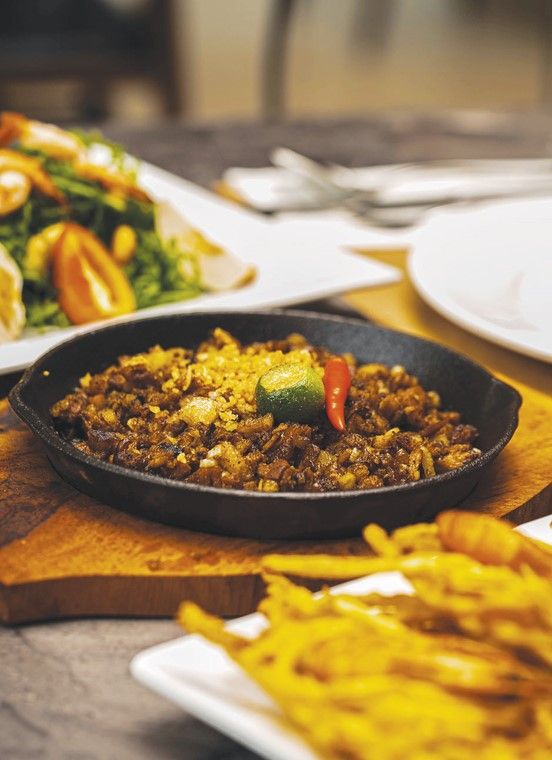Imagine sisig sizzling on your plate right now
Kapampangan cuisine shines bright in this new restaurant
By Poch Eulalia
Sisig has been a mainstay in Filipino cuisine.
One of the earliest records related to the dish dates as far back as 1732, after an Augustinian friar defined it in a dictionary he was working on. At the time, it was described as a salad of sorts that utilized green guava or papaya, dressed in salt, pepper, garlic, and vinegar.
Modern sisig, as we’ve come to know and love, can be attributed to Lucia Cunanan, commonly referred to as “Aling Lucing.” Her recipe involved using various parts of the pig’s head, including its brain, and adding in chicken liver before serving it on a sizzling plate.

As the years went by, sisig eventually became the go-to pulutan dish for many due to its alleged benefit of being a perfect hangover elixir. Many versions of the dish would start to pop up, making use of different meat and including different spices or add-ons to change up the flavor. Perhaps the most famous addition to sisig would be the mayonnaise and egg combo. Sadly, not too many restaurants follow the original Kapampangan recipe for sisig, save for this one new restaurant in Tagaytay.
Binulo Tagaytay is a restaurant that aims to bring the heritage of Pampanga to the scenic landscapes of Tagaytay. Originally a restaurant launched by Maricar Miranda in Clark, Angeles, Binulo found its way to the City of All Occasions after entrepreneurs Augustine Roa and Aniela Tolentino convinced her to branch out. It takes its name from an Aeta cooking tradition, where dishes are cooked inside bamboo. Here’s a look at some of the dishes worth trying.

Right off the bat, the pork sisig dish is just how any Kapampagan would want it served. A generous serving of chopped-up pork, calamansi, and chili topped on a sizzling plate, with no egg or mayonnaise in sight. If you’re looking to add some more crunch to your sisig, consider ordering pititian with atsara, Pampanga’s version of chicharon, with just the right amount of crispness and fat. To balance the saltiness, the atsara helps sweeten the palate. The health nuts can opt for the paco salad.
Of course, Kapampangan cuisine is more than just pork sisig. One of the standout dishes from Binulo is the pangat na ulang (River Prawn Soup), prepared using the Aeta’s binulo style of cooking. Those looking to catch something for the reels will find opportunity as the kitchen staff bring out the bamboo where the soup was cooked and pour it out for you. Other signature dishes to enjoy include kare-kare, murcon Capampangan (a meat roll stuffed with ground pork, chorizo de Bilbao, and cheese drizzled with special sauce), crispy tadyang (deep-fried beef ribs), and binukadkad na hito (fried catfish). Since you’re already in Tagaytay, you might as well try the bulalo.
For those looking for something exciting, Binulo Tagaytay also offers Pampanga’s more exotic food like batute (stuffed fried frog), kilayin (pork meat, liver, and lungs prepared as a stew), and kamaro (fried mole crickets). As intimidating as these dishes sound, the taste is much better than anyone would anticipate. Taking a bite into the kamaro feels like eating a serving of bonito flakes boasting of a soft, nearly feathery texture that comes with a light crisp. Flavorwise, there are no unwelcome aftertastes. Who would’ve thought a helping of fried mole crickets would work well as bar chow?
Binulo Tagaytay is at Station House, Silang Junction South, Tagaytay City.